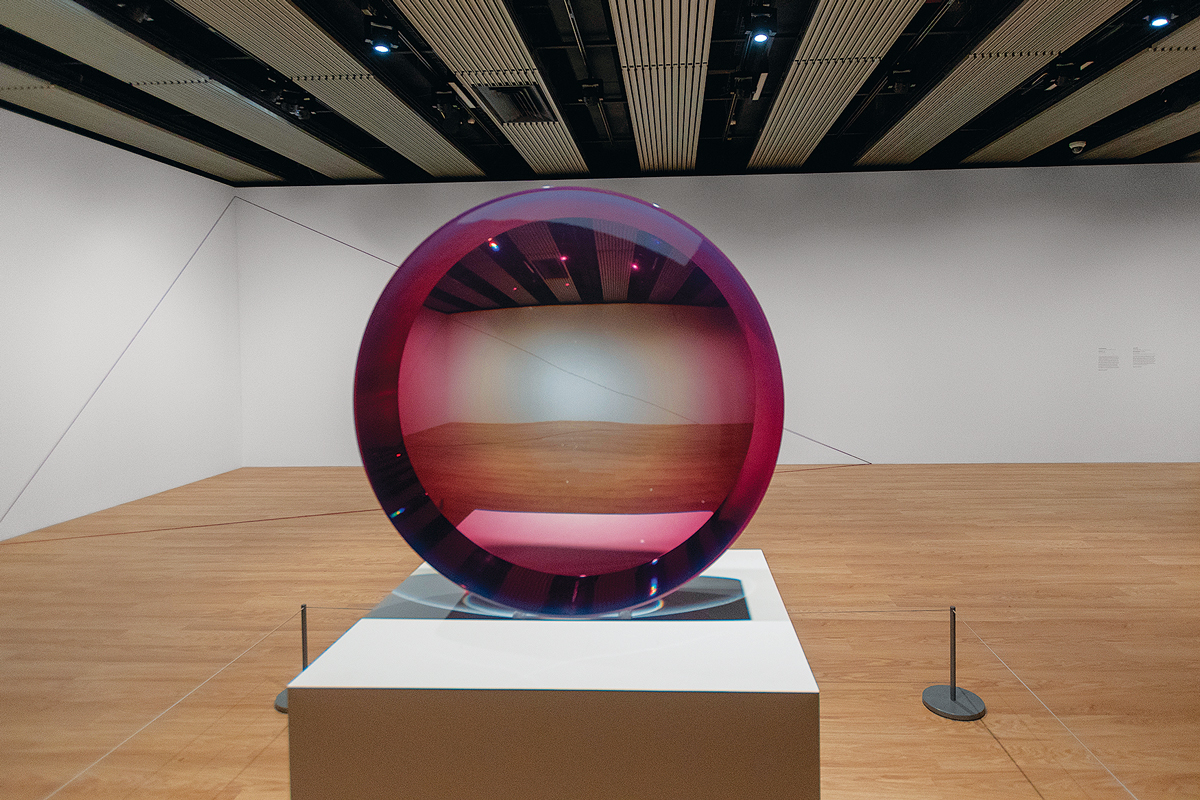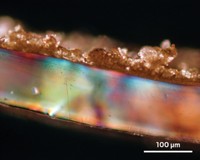Advertisement
Grab your lab coat. Let's get started
Welcome!
Welcome!
Create an account below to get 6 C&EN articles per month, receive newsletters and more - all free.
It seems this is your first time logging in online. Please enter the following information to continue.
As an ACS member you automatically get access to this site. All we need is few more details to create your reading experience.
Not you? Sign in with a different account.
Not you? Sign in with a different account.
ERROR 1
ERROR 1
ERROR 2
ERROR 2
ERROR 2
ERROR 2
ERROR 2
Password and Confirm password must match.
If you have an ACS member number, please enter it here so we can link this account to your membership. (optional)
ERROR 2
ACS values your privacy. By submitting your information, you are gaining access to C&EN and subscribing to our weekly newsletter. We use the information you provide to make your reading experience better, and we will never sell your data to third party members.
Art & Artifacts
Movers And Shakers
Getty Conservation Institute creates a library of plastics to help conservators protect plastic art
Materials scientist Odile Madden leads a team studying how to stop degradation in museums
by XiaoZhi Lim, special to C&EN
October 6, 2019
| A version of this story appeared in
Volume 97, Issue 39

These days, one of the most common complaints about plastics is that they don’t break down fast enough. But you won’t hear this complaint from conservators in museums around the world. They’re worried about plastic objects and artworks warping, discoloring, or becoming sticky. At the Getty Conservation Institute, materials scientist Odile Madden leads a four-person team that is exploring how to slow, stop, or even reverse this degradation.
To do this, the team is creating a reference library of plastics, collecting data on their properties, and observing how different types of plastic break down. The hope is to share this knowledge with museum conservators to help them care for plastic artworks and artifacts in their collections. XiaoZhi Lim spoke with Madden about why an art conservation lab decided to start making its own plastic materials.
Vitals

▸ Current position: Senior scientist, Modern and Contemporary Art Research Initiative, Getty Conservation Institute Science Department
▸ Education: BA, Italian and art history, University of California, Los Angeles; MA, history of art and archaeology, New York University; advanced certificate in conservation, Institute of Fine Arts, NYU; PhD, materials science and engineering, University of Arizona
▸ Favorite plastic to work on: Cellulose acetate. But I’m fickle; I will love the next plastic I work on.
▸ Favorite artwork: Sculptures from the light and space movement. I’m very enamored with the work of Fred Eversley right now. His bold, lens-like forms that collect energy are very beautiful.
▸ What she does outside work: My favorite hobby is playing with my 3-year-old son, usually running around our front lawn or splashing in the pool.
What problems do plastics pose for museum conservators?
One will find examples of plastic in almost every museum collection now as either the artwork, the artifact, or the materials used to preserve and store them. We’re finding that some plastics start degrading after decades, and we’ve never seen these kinds of deterioration before because these materials are new, relatively speaking. Some plastics turn yellow; some distort, crack, break, turn sticky. Some emit acidic vapors that can hydrolyze the object they are part of and travel to other objects nearby through the air or through contact with them.
Why is this a tricky problem to solve for museum conservators and conservation scientists?
The material we call plastic is actually a lot of different kinds of material. That means that there are a lot of different kinds of plastic and different technologies for shaping plastic, and then different conditions that one should understand if one’s going to come up with a treatment for damaged objects or devise optimum storage conditions.
And how does making your own collection of plastics help?
In conservation, we make a lot of what we call mock-ups—for example, egg tempera paintings on wood prepared according to medieval traditions or metal alloys cast similarly to methods used in China at a certain time. They’re experimentally prepared facsimiles. Plastics have been difficult to mock up because they’re made in factories, they’re made in bulk, and they require machinery. So the Getty Conservation Institute has invested in a laboratory-scale set of plastic-making tools. These are an extruder/compounder, a pelletizer, and an injection molder. With these tools, we are starting to make our own plastics.
If we want to understand the effect of different plasticizers or different concentrations of plasticizer on the material, we can now make samples to study. So we can make different pieces of plastic here in our lab, and then we can characterize them analytically. We can simulate aging with heat, elevated humidity, or bright light. We can test the samples’ mechanical properties, and we can make reproducible experiments with them.
What plastics are you making right now?
We study a plastic called cellulose acetate. It was the original Lego and very popular during the World War II period. It was a plastic that could be injection molded, so it could be mass-produced. The problem is that it degrades—for example, by loss of plasticizers. The plasticizers volatilize, and sometimes they form a sticky surface. Then the plastic object loses mass, distorts, and can crack.
We’re working on cellulose acetate formulations now with varying amounts of one plasticizer, diethyl phthalate. Then we’re going to try varying amounts of another plasticizer, triphenyl phosphate, and then we’re going to try combinations of two plasticizers. We mix the material together, we extrude a long strand, and then we feed that into a pelletizer, which chops the strand into very small pieces. This is how the plastics industry works, making pellets.

Once we have our pellets, we feed an amount of those into an injection molding machine that heats the material and, with pressure, forces it into a mold. We then cool the mold and take out the molded object, and that’s what we can do our experiments on.
We are working with three shapes currently: we’re making disks, bars, and dog bones, which are a standard shape for mechanical testing. We are doing the molding so we can examine how the fabrication process affects the properties of the finished object, where stress is developing, what are the effects of cooling the material quickly or slowly. We’ve actually made thousands of pieces of plastic but a limited number of formulations.
What do you hope to do with your results?
We’re hoping to collect a huge amount of data, and we’re hoping to be able to share these plastics that we make with our colleagues who are also conducting experiments on this kind of material. In so doing, we can build a body of knowledge about stability and instability and make that information available to the public, artists, conservators, collections managers, and museums so that they can optimize the conditions that preserve these objects.
Should artists continue to use plastic even though it will break down?
Plastic is remarkably versatile, so it’s a material that is exciting to explore. Arguably, no material will last forever. We don’t expect that artists would stop printing or drawing or painting on paper even though paper is really fragile. The question of making art is largely about expression. It’s a dance of artistic intent and the constraints and possibilities of the material. Plastic has exciting possibilities in design.

XiaoZhi Lim is a freelance writer. A version of this story first appeared in ACS Central Science: cenm.ag/madden. This interview was edited for length and clarity.




Join the conversation
Contact the reporter
Submit a Letter to the Editor for publication
Engage with us on Twitter